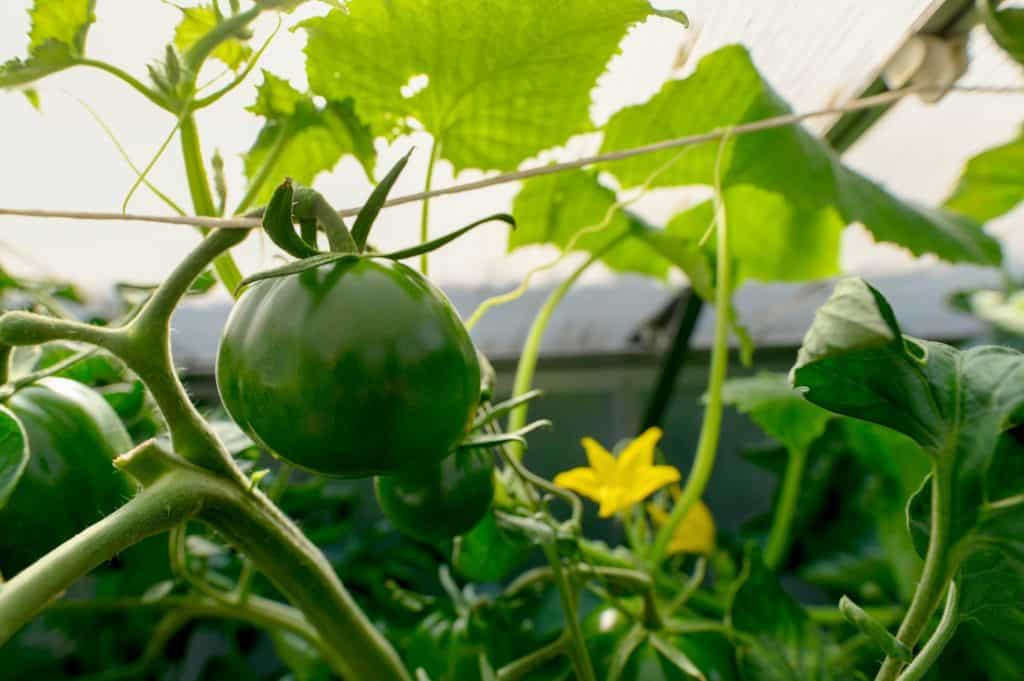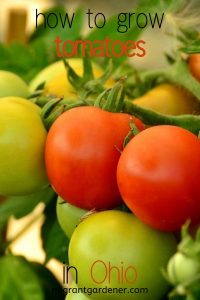Growing Tomatoes in Ohio
Climatic Requirements for Growing Tomatoes in Ohio
Growing Tomatoes in Ohio – Climatically speaking, regardless of what tomato it is – Black Russian tomato, Campari tomato, Beefmaster tomato, whatever it is – Ohio is nicely suited to tomatoes. Ohio is the nation’s fourth-largest tomato production state.
Because tomatoes need warm weather they should not be planted until any danger of frost has subsided. Well, either that or you must provide your plants with protection.
In Ohio, typically, that would mean anything after May 20.

In southern Ohio, this date can be a week or two sooner. In northern Ohio, it’s wise to push that date out by around a week.
For the successful production of tomatoes, air temperature is certainly a relevant factor. Tomatoes are highly sensitive to low night temperatures. The plants do not do well in extremely high temperatures either.
Blossom-end rot is a common problem when daytime temperatures are too warm and night temperatures drop below 55 degrees F.
In the summer, the same problem can arise should daytime temperatures rise above 90 degrees F while nighttime temperatures drop below 75 degrees F.
Best Soil for Tomatoes
The best type of soil for tomatoes is a well-drained, loamy soil that has healthy incorporation of nutrients and organic matter.
If your soil is more of a heavy clay add plenty of organic matter. Compost or peat moss is ideal as a way of enhancing drainage and soil structure.
As for pH (amount of acidity or alkalinity), tomatoes prefer soil to be somewhat acidic. The ideal pH for tomatoes is between 6.2 and 6.8.
Growing Tomatoes in Ohio – Sunshine for Tomatoes
Tomato plants much prefer full sunshine. In other words, with more sunlight tomato plants will perform better.
Ideally, you’ll want your tomato plants to receive six to eight hours of sunshine daily.
Watering Tomatoes
Tomato plants require a lot of water, particularly when the temperatures climb.
This means it can be a good idea to position your tomato plants near a source of water.
Tomato plants require at least an inch to two inches of water each week.
Fertilizing Tomato Plants
Tomatoes need plenty of feeding. On the other hand, too much fertilizer is never a good thing.
As an example of this, too much nitrogen (N) will result in too much foliage production with little to no fruit production.
Too little fertilizer, with particular regard to nitrogen, will mean very slow overall growth and low fruit yield.
When you transplant your tomato plants a starter tomato fertilizer is ideal. A starter fertilizer will help your plants to grow more rapidly and to flower sooner.
Starter tomato fertilizers are high in phosphorus (P). Phosphorus is required for root development.
When you’re making applications of your starter fertilizer (or any fertilizer for that matter) be sure to follow the instructions on the label.
Besides the starter fertilizer, tomato plants also benefit from the addition of a complete fertilizer. This complete fertilizer should have a chemical ratio (nitrogen-phosphorus-potassium, or N-P-K) of 8-16-16, 6-12-18, or 6-24-24. Add two or three pounds of this complete fertilizer for every 100 square feet of soil. Either that or make applications based on manufacturer recommendation.
Growing Tomatoes in Ohio – Recommended Tomato Varieties for Ohio
‘Roma‘
‘Roma’ cherry tomato is recommended in Ohio by the Ohio State University Extension.
‘Roma’ is popular in Italian dishes. It has a dense, meaty flesh and a moisture content that is low.
The fruit is more pear-shaped than round and it contains few seeds.
The color varies between deep red, reddish-pink, and reddish-orange.
Roma tomato plants only grow to around 4 feet in height. Fruit production is pretty much all at the same time. ‘Roma’ tomato plants are determinate in nature.
The fruit matures in approximately 70-80 days after transplanting.
‘Sungold’
The ‘Sungold’ cherry tomato is a fine choice of tomato for Ohio gardeners. ‘Sungold’ is an early-season tomato variety. The fruit reaches maturity approximately 55-60 days after transplanting.
‘Sungold’ is an indeterminate tomato plant variety though the vines only reach around 3-5 feet in height.
The fruits are oval-oblong in shape and have a meaty texture.
There are very few seeds inside the fruit. The color, as you might imagine, is golden-orange.
‘Sungold’ is resistant to fusarium wilt and tobacco mosaic virus.
‘Early Girl’
‘Early Girl’ is among the best tomato plant varieties for short-season growing. That makes it ideal for Ohio. It’s an indeterminate tomato variety so the plants require support. And because it is indeterminate the fruit is produced throughout the growing season.
The fruit takes around 55 days to reach maturity after transplanting.
The fruit is round and has a fresh, sweet flavor.
‘Jet Star’
‘Jet Star’ tomato plants are early season. The plants enjoy high fruit yield and fruits mature after approximately 70-75 days after transplanting.
Growth habit is indeterminate so the plants require support.
Fruit color is deep red and it has a lovely sweet flavor.
‘Jet Star’ is resistant to verticillium wilt and fusarium wilt.
‘Jet Star’ tomato plants are a very good choice for the Ohio gardener according to the Ohio State University Extension.
‘Juliet’
‘Juliet’ is an early-season producer and the fruit takes approximately 80 days in which to reach maturity.
The fruit is oblong in shape and has a sweet flavor.
‘Juliet’ has a good tolerance for high temperatures and humidity.
It’s an indeterminate variety and some people refer to it as a mini Roma tomato due to the fruit’s shape.
Plants reach 6-8 feet in height so it must be provided with support.

